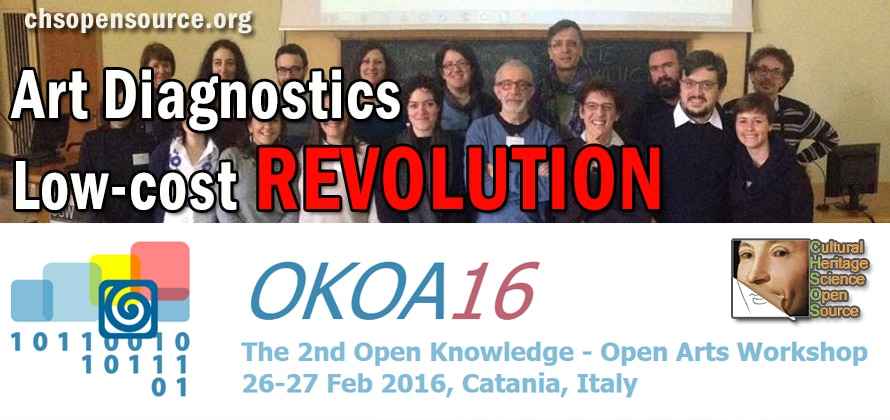
We just delivered our talk at OKOA 2016 (in Italian).
The preservation of cultural heritage is a critical civic responsibility especially in Italy where the vast cultural heritage is widespread from the renowned mega-cities of Rome, Florence and Venice to almost every village. This rich distribution of cultural heritage property demands local civic engagement simply because governmental institutions alone cannot effectively manage the sheer mass numbers of artistic and archaeologic heritage sites. The role to be played by local communities at once becomes obvious. Communities must be helped to realize that their wellness and their economic future depend also on preserving and subsidizing their cultural heritage. In Italy, as well as in other European countries, there have been significant cuts to public funding for art conservation. Consequently it is today even more urgent that local communities provide adequate financing to appropriately conserve and maintain their cultural heritage.
Cultural Heritage Science (CHS) is a scientific discipline that examines works of art and archaeology by means of technical and scientific methodologies. Information derived from these studies are used to understand not only when these artifacts were made, who made them, and how they were made but, more importantly, how are they to be preserved, what conservation treatment represents the best option and why.
DOWNLOAD our talk
OKOA 2016 Art Diagnostics: Low-cost Revolution
Cultural Heritage Science can raise community awareness and can promote suitable conservation. The scientific examination of art and archaeology stimulates a community’s appreciation for their cultural heritage by elucidating their extraordinary and unique historical value.
Unfortunately, scientific examination and documentation of art is notoriously expensive. The most important and recognizable works of art from prestigious museums are often subjected to extensive scientific studies , unfeasible for the vast majority of cultural heritage objects, existing in local communities simply because they lack comparable financial resources. Typically larger museums have budgets sufficient for scientific departments equipped with cutting-edge technologies. In contrast, small to medium sized cultural institutions have relatively limited access to the same science and technology.

We presents the “Cultural Heritage Science Open Source” (CHSOS) initiative which was launched in 2012 to bridge this technological divide, to develop and disseminate affordable and sustainable methodologies for art examination that can reach a much larger audience of cultural institutions This search for low-cost art examination and documentation is becoming a rapidly expanding research topic and a growing number of scholars are exploring affordable technical solutions also for historical architecture documentation. CHSOS disseminates methods for art examination in three significant ways, focusing specifically on the low- cost technical solutions, through its popular blog, publications on open access peer reviewed journals and training programs. The CHSOS blog has attracted a growing network of art conservation professionals interested in introducing Cultural Heritage Science concepts into their workflow. The Blog has also resulted in collaborative field projects with local stakeholders.





